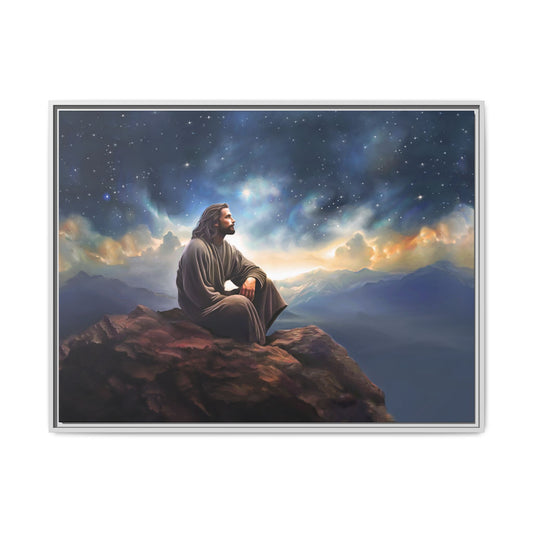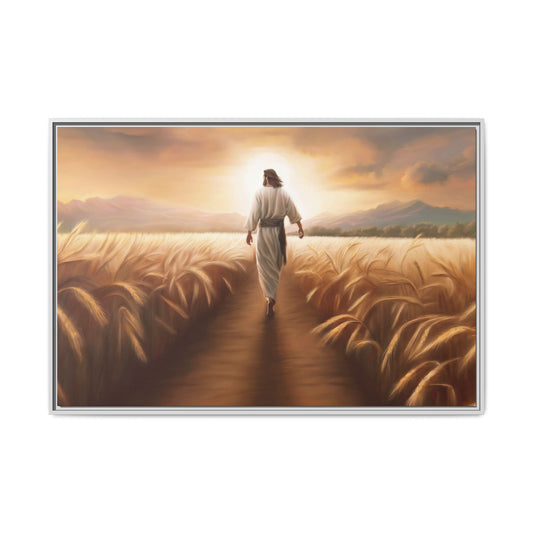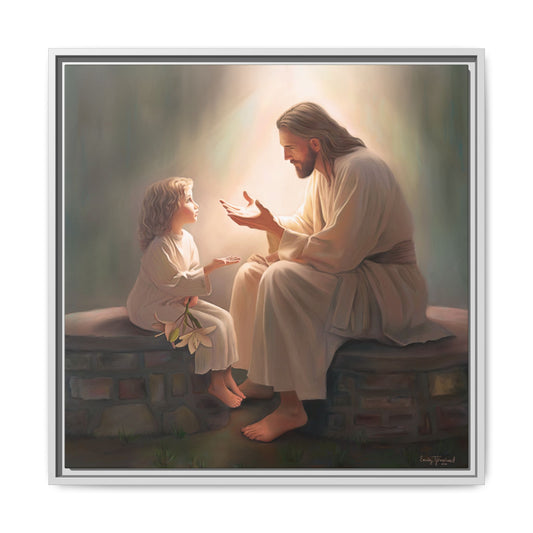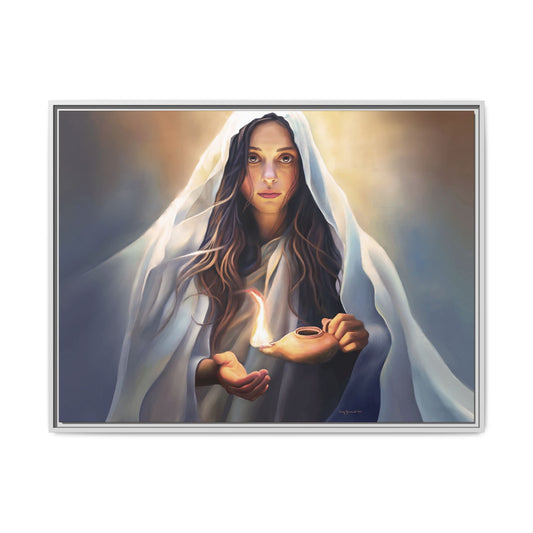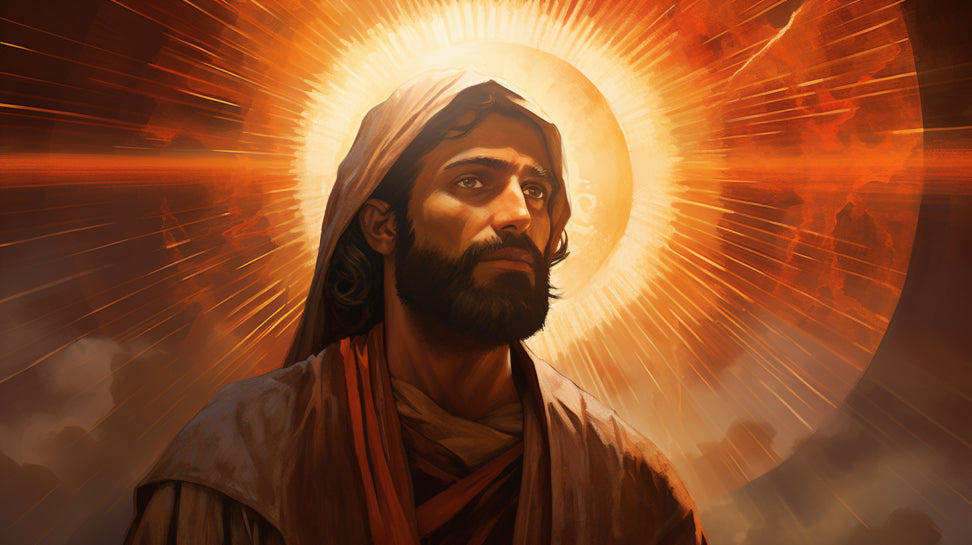
Real Picture of Jesus
Share
We've all heard stories and seen paintings of Jesus - but what did the real picture of Jesus look like? What was his physical appearance? Was he tall or short, fair or dark? We may never know the answer, but it's worth exploring the evidence and theories surrounding Jesus' physical characteristics. Although, in truth, his message about the fatherhood of God and the brotherhood of man is truly the only real important thing. Still, it can be interesting to consider Jesus' possible appearance when he walked the earth. From ancient biblical descriptions to modern studies, we'll take a close look at the different depictions of Jesus to get a better understanding of what he may have looked like.
In seeking to envision Jesus we turn to scripture, not for physical descriptions, but for reflections of His essence, character, and the impact of His teachings and actions. The following passages provide glimpses into the profound nature of Jesus's ministry and His divine attributes: John 1:1, 14: 'In the beginning was the Word, and the Word was with God, and the Word was God... The Word became flesh and made his dwelling among us. We have seen his glory, the glory of the one and only Son, who came from the Father, full of grace and truth.' These verses speak to the divine nature of Jesus and His incarnation, emphasizing that the "real picture" of Jesus is found in His divine essence and mission. Philippians 2:5-8: 'In your relationships with one another, have the same mindset as Christ Jesus: Who, being in very nature God, did not consider equality with God something to be used to his own advantage; rather, he made himself nothing by taking the very nature of a servant, being made in human likeness.' This scripture highlights Jesus's humility and servitude, offering a powerful aspect of His character for reflection and representation. Isaiah 53:2-3 (prophetic of Jesus): 'He had no beauty or majesty to attract us to him, nothing in his appearance that we should desire him. He was despised and rejected by mankind, a man of suffering, and familiar with pain. Like one from whom people hide their faces he was despised, and we held him in low esteem.' This Old Testament prophecy suggests that Jesus's impact and significance were not in His physical appearance but in His suffering, sacrifice, and the profound nature of His mission. Matthew 9:36: 'When he saw the crowds, he had compassion on them, because they were harassed and helpless, like sheep without a shepherd.' Jesus's compassion and empathy for the suffering of others are central to His ministry, providing a "real picture" of His character. Luke 4:18-19: '"The Spirit of the Lord is on me, because he has anointed me to proclaim good news to the poor. He has sent me to proclaim freedom for the prisoners and recovery of sight for the blind, to set the oppressed free, to proclaim the year of the Lord’s favor."' Jesus's mission statement, derived from Isaiah, underscores His purpose and the focus of His work on earth, giving us insight into His priorities and the nature of His kingdom. Revelation 1:13-16: Provides a symbolic description of the risen Christ in a vision to John, with imagery such as hair white like wool, eyes like blazing fire, and feet like bronze glowing in a furnace. While symbolic, this vision reflects aspects of Jesus's divine authority, judgment, and purity, contributing to a "real picture" of His glorified state. In contemplating the "Real Picture of Jesus," scriptures guide us towards understanding His spiritual and moral essence rather than His physical form. They invite believers to envision Jesus through the lens of His teachings, actions, and divine attributes, painting a picture that is real in its impact and transformative power.
These scriptural references and contexts provide a foundation for exploring the "Real Picture of Jesus" beyond physical appearance, focusing on the qualities and actions that define His life and ministry. This approach offers a more profound and spiritually meaningful understanding of who Jesus is.

 Visuals were scarce due to the people's religious beliefs and the church's authority. The Second Commandment in the Bible prohibited idol worship and limited the production of Jewish art. Additionally, the Byzantine Empire enforced a ban on figural representations during the Iconoclastic Controversy. Hence, religious art was mainly limited to symbols and abstract motifs. People resorted to symbols and allegories to indirectly reference Jesus. One of the earliest symbol was the fish- a simple to represent that one is a believer in Christ. The church's authority also impacted the creation of artworks, leaving us with few contemporary images of Jesus. As such, we must turn to descriptions of ancient artworks and symbols to gain insight into Jesus' life.
Visuals were scarce due to the people's religious beliefs and the church's authority. The Second Commandment in the Bible prohibited idol worship and limited the production of Jewish art. Additionally, the Byzantine Empire enforced a ban on figural representations during the Iconoclastic Controversy. Hence, religious art was mainly limited to symbols and abstract motifs. People resorted to symbols and allegories to indirectly reference Jesus. One of the earliest symbol was the fish- a simple to represent that one is a believer in Christ. The church's authority also impacted the creation of artworks, leaving us with few contemporary images of Jesus. As such, we must turn to descriptions of ancient artworks and symbols to gain insight into Jesus' life.




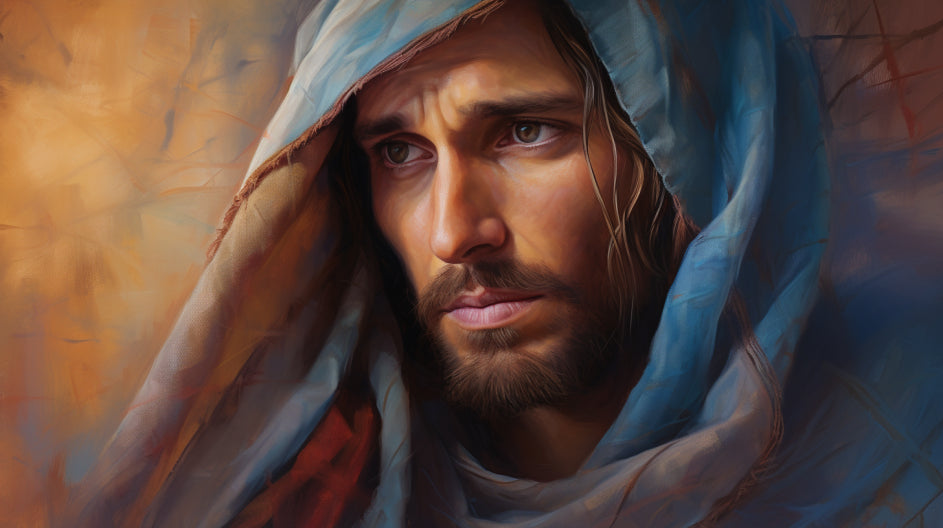 Frequently, we observe cultural diversity in the depictions of Jesus as his image is interpreted and re-interpreted by different cultures. From published works to original studies, these portrayals can vary greatly from one culture to the next. To better understand this phenomenon, let's take a closer look at the following aspects:
Frequently, we observe cultural diversity in the depictions of Jesus as his image is interpreted and re-interpreted by different cultures. From published works to original studies, these portrayals can vary greatly from one culture to the next. To better understand this phenomenon, let's take a closer look at the following aspects:





 Through our exploration of the complexities of early Christianity, we've come to appreciate the diversity of depictions of Jesus and their devotional significance. From the ancient images of Jesus as a shepherd, to the later European portraits of Jesus as a fair-skinned man, to the more recent attempts to capture a culturally accurate Jesus, each portrayal has its own special meaning for those who understand it. In the end, the real picture of Jesus can be found in the hearts and minds of those who seek him, no matter the form it takes. As we move forward, let's remember to appreciate the diversity of depictions and their devotional significance.
Through our exploration of the complexities of early Christianity, we've come to appreciate the diversity of depictions of Jesus and their devotional significance. From the ancient images of Jesus as a shepherd, to the later European portraits of Jesus as a fair-skinned man, to the more recent attempts to capture a culturally accurate Jesus, each portrayal has its own special meaning for those who understand it. In the end, the real picture of Jesus can be found in the hearts and minds of those who seek him, no matter the form it takes. As we move forward, let's remember to appreciate the diversity of depictions and their devotional significance. 
Key Takeaways
- The canonical Bible in its present form emerged in the fourth century.
- Pre-Constantine Christians likely held negative views towards Roman gods and religions.
- The Pauline version of Christianity eventually triumphed over other sects.
- Constantine's support helped Christianity become the world's largest religion.

Exploring the quest for the real picture of Jesus
Throughout history, many artists have attempted to capture Jesus Christ's physical features and likeness in their works. In this article, we'll investigate the quest to uncover Jesus' true image, exploring different depictions from different cultures and analyzing them. This exploration may help us gain a better understanding of Jesus.A Picture of Jesus According to the Scriptures:
Addressing the quest for a historically accurate depiction of Jesus Christ, it's important to acknowledge from the outset that no physical descriptions of Jesus's appearance are provided in the biblical texts. This absence has led to a wide variety of representations throughout history, shaped by cultural, theological, and artistic influences. Instead of searching for a "real picture" based on physical traits, we can turn to scriptures that highlight the qualities and actions of Jesus, offering insights into His character and ministry. These scriptural insights can guide our understanding of who Jesus was and what He represented, providing a "picture" that transcends physical appearance.In seeking to envision Jesus we turn to scripture, not for physical descriptions, but for reflections of His essence, character, and the impact of His teachings and actions. The following passages provide glimpses into the profound nature of Jesus's ministry and His divine attributes: John 1:1, 14: 'In the beginning was the Word, and the Word was with God, and the Word was God... The Word became flesh and made his dwelling among us. We have seen his glory, the glory of the one and only Son, who came from the Father, full of grace and truth.' These verses speak to the divine nature of Jesus and His incarnation, emphasizing that the "real picture" of Jesus is found in His divine essence and mission. Philippians 2:5-8: 'In your relationships with one another, have the same mindset as Christ Jesus: Who, being in very nature God, did not consider equality with God something to be used to his own advantage; rather, he made himself nothing by taking the very nature of a servant, being made in human likeness.' This scripture highlights Jesus's humility and servitude, offering a powerful aspect of His character for reflection and representation. Isaiah 53:2-3 (prophetic of Jesus): 'He had no beauty or majesty to attract us to him, nothing in his appearance that we should desire him. He was despised and rejected by mankind, a man of suffering, and familiar with pain. Like one from whom people hide their faces he was despised, and we held him in low esteem.' This Old Testament prophecy suggests that Jesus's impact and significance were not in His physical appearance but in His suffering, sacrifice, and the profound nature of His mission. Matthew 9:36: 'When he saw the crowds, he had compassion on them, because they were harassed and helpless, like sheep without a shepherd.' Jesus's compassion and empathy for the suffering of others are central to His ministry, providing a "real picture" of His character. Luke 4:18-19: '"The Spirit of the Lord is on me, because he has anointed me to proclaim good news to the poor. He has sent me to proclaim freedom for the prisoners and recovery of sight for the blind, to set the oppressed free, to proclaim the year of the Lord’s favor."' Jesus's mission statement, derived from Isaiah, underscores His purpose and the focus of His work on earth, giving us insight into His priorities and the nature of His kingdom. Revelation 1:13-16: Provides a symbolic description of the risen Christ in a vision to John, with imagery such as hair white like wool, eyes like blazing fire, and feet like bronze glowing in a furnace. While symbolic, this vision reflects aspects of Jesus's divine authority, judgment, and purity, contributing to a "real picture" of His glorified state. In contemplating the "Real Picture of Jesus," scriptures guide us towards understanding His spiritual and moral essence rather than His physical form. They invite believers to envision Jesus through the lens of His teachings, actions, and divine attributes, painting a picture that is real in its impact and transformative power.
These scriptural references and contexts provide a foundation for exploring the "Real Picture of Jesus" beyond physical appearance, focusing on the qualities and actions that define His life and ministry. This approach offers a more profound and spiritually meaningful understanding of who Jesus is.

The significance of Jesus portraits
Many have sought for the real picture of Jesus for centuries, and understanding the significance of Jesus portraits is an important part of that quest. When we consider the overall quest for a real image of Jesus, it's important to understand the cultural implications of these portraits. Here are the key elements:- The portrait's accuracy in representing Jesus
- The symbolism behind the image
- The impact of the image on the audience
- Its relevance in the present day
- The potential to inspire faith and devotion.

Various Depictions and Cultural Considerations
Let us examine various depictions and seek to uncover a culturally accurate representation of Jesus Christ. In recent years, there's been a surge of interest among scholars in attempting to create a historically accurate image of Jesus. By analyzing ancient texts, artwork, and artifacts, researchers have sought to paint a more accurate portrait of Jesus based on the contexts in which he lived and taught. The quest to uncover an accurate representation of Jesus has been further complicated by the fact that he's a highly contested figure, with different religions and traditions holding varying opinions of him. Ultimately, the search for what Jesus looked like has become a complicated endeavor, requiring a careful examination of the historical context of Jesus portraits and an understanding of the cultural nuances surrounding the representations of Jesus Christ. Despite the absence of contemporary images of Jesus from his lifetime, there are various references to early depictions of him in Christian catacombs, artworks, and symbols from the time period. Visuals were scarce due to the people's religious beliefs and the church's authority. The Second Commandment in the Bible prohibited idol worship and limited the production of Jewish art. Additionally, the Byzantine Empire enforced a ban on figural representations during the Iconoclastic Controversy. Hence, religious art was mainly limited to symbols and abstract motifs. People resorted to symbols and allegories to indirectly reference Jesus. One of the earliest symbol was the fish- a simple to represent that one is a believer in Christ. The church's authority also impacted the creation of artworks, leaving us with few contemporary images of Jesus. As such, we must turn to descriptions of ancient artworks and symbols to gain insight into Jesus' life.
Visuals were scarce due to the people's religious beliefs and the church's authority. The Second Commandment in the Bible prohibited idol worship and limited the production of Jewish art. Additionally, the Byzantine Empire enforced a ban on figural representations during the Iconoclastic Controversy. Hence, religious art was mainly limited to symbols and abstract motifs. People resorted to symbols and allegories to indirectly reference Jesus. One of the earliest symbol was the fish- a simple to represent that one is a believer in Christ. The church's authority also impacted the creation of artworks, leaving us with few contemporary images of Jesus. As such, we must turn to descriptions of ancient artworks and symbols to gain insight into Jesus' life.
Ancient artworks and symbols indirectly related to Jesus
We can gain insight into Jesus' life through descriptions of ancient artworks and symbols that indirectly reference him. Paintings of the face of Jesus are rare since most of the ancient artworks focus on symbols such as the cross, the lamb, and the fish. These symbols were used to signify Jesus' presence and represent his teachings. For instance, the fish was a symbol of Jesus' miracles and the lamb was a symbol of Jesus' sacrifice. In addition, the cross was used to represent the crucifixion and resurrection of Jesus. While these symbols don't provide a direct picture of Jesus, they help to give us a better understanding of his life and teachings. Furthermore, these symbols are still used today to remember Jesus and the message he brought into the world.References to early depictions in Christian catacombs and other early Christian artwork
We've uncovered numerous references to early depictions of Jesus in Christian catacombs and other early Christian artwork. From paintings of Jesus with long hair, to sculptures and carvings of Jesus in the form of a lamb, these visual references provide insight into how early Christianity was interpreted and understood. Here are five ways that early Christians depicted Jesus:- Paintings with Jesus with long hair, such as the Catacomb of Commodilla and the Catacomb of Priscilla in Rome
- Carvings of Jesus as a lamb, such as the Catacomb of San Callisto
- Symbolic depictions of Jesus, such as the Good Shepherd mosaic in the Catacomb of Praetextatus
- Paintings of Jesus as a child, such as the Catacomb of Santa Domitilla
- Jesus as the center of Christian worship, such as the Catacomb of Domitilla

Early Christian Portrayals of Jesus
We explore the early Christian portrayals of Jesus and analyze how the use of symbols and allegorical representations, imperial iconography, and the earliest surviving portraits of Jesus changed and shaped the perception of Jesus in early Christianity.Discussion on the use of symbols and allegorical representations
In this article, we'll discuss how these symbols and representations developed, why they were used, and what they mean.Lamb of God, Good Shepherd, and other symbolic representations
How have early Christian representations of Jesus as the Lamb of God, Good Shepherd, and other symbols evolved over time? From the Jewish prohibition of graven images to the Byzantine iconoclastic controversy, various forms of symbolism have been used to depict Jesus. The Lamb of God and Good Shepherd are two of the most commonly used symbols, representing Jesus' purity and care for his people. Other symbols, such as the fish and cross, are deeply rooted in Christian tradition and are used to represent belief in Christ and Jesus' death and resurrection. These symbols serve as a reminder of Jesus' teachings and legacy. Next, we'll discuss the evolution of imperial iconography and its impact on early Christian artworks.
The evolution of imperial iconography and its impact on early Christian artworks
From the early days of Christianity, imperial iconography has had a significant impact on how Jesus was depicted in artworks. The face of Jesus was often used as a symbol of the divine, with the bible providing various visual interpretations. Early Christian artworks were heavily influenced by imperial iconography, with depictions of Jesus often portraying him as a triumphant and powerful figure. These portrayals sought to establish a link between Jesus and the imperial power of Rome. As a result, Jesus was depicted in the same manner as the Roman emperors, complete with a halo and imperial clothing. This had a significant effect on how Jesus was portrayed in art, and served to reinforce the power of the Roman Empire. An examination of the earliest surviving portraits of Jesus will shed further light on this topic.Examination of the earliest surviving portraits of Jesus
Building on the influence of imperial iconography on early Christian art, we now turn to an examination of the earliest surviving portraits of Jesus. From the 4th century onward, artists sought to capture the godly truth of Jesus in various forms. These works often depicted Jesus in a three-quarter view, with a halo or nimbus, and robes of royal purple. Other depictions featured Jesus with his eyes closed in a contemplative state, or with a hand raised in blessing. These images sought to capture the spiritual essence of Jesus, while also conveying the divine power and authority attributed to him. Many artists used the imperial iconography of the Roman Empire as a model for their works. These early Christian portrayals of Jesus helped to shape the way he's viewed today, as a symbol of hope and a source of divine guidance.Popular European Depictions of Jesus
We will explore the popular European depictions of Jesus during the Renaissance period. Beginning with Leonardo da Vinci's iconic 'The Last Supper' painting and its influence on later works. We'll then examine how Jesus was portrayed in some of the most famous European paintings of the time.The rise of realistic artistic representation during the Renaissance
As we explore the introduction to the rise of realistic artistic representation during the Renaissance, we'll take a look at some of the popular European depictions of Jesus:- Christian artists of the Renaissance often painted Jesus with a calm, compassionate, and humble expression. Jesus was often shown in the traditional gold-haloed and white-robed figure. Artists often depicted Jesus with a beard to show his wisdom and authority.
- Jesus was often depicted as a shepherd to emphasize his role as a leader and protector. Jesus was sometimes represented as a heroic warrior or a compassionate savior.

The portrayal of Jesus in famous European paintings
Perhaps most iconic of these is Michelangelo's 'The Sistine Chapel Ceiling', which depicts Jesus in the midst of a cosmic struggle. Caravaggio's 'The Crucifixion of St. Peter' is also an iconic painting of Jesus. Other famous artists, such as Raphael, El Greco, and Rembrandt, have also produced works depicting Jesus."The Sistine Chapel Ceiling" by Michelangelo
Michelangelo's 'The Sistine Chapel Ceiling', one of the most iconic European depictions of Jesus has become a symbol of holiness and beauty, a timeless image of Jesus that continues to captivate viewers to this day. Some of its most notable features:- Dramatic lighting and vivid colors
- Realistic and lifelike depictions of Jesus
- Intricate details and symbolism
- near-superhuman use of perspective
- An inspiring representation of Jesus' divine power.

Other notable depictions by famous artists
Our curiosity is piqued by the many famous European depictions of Jesus. These masterpieces provide a unique insight into the idea of Jesus as both man and divine. Some notable examples include:- Rembrandt's `The Return of the Prodigal Son`
- Rubens's `The Descent from the Cross`
- Michelangelo's `The Last Judgement`
Cultural Diversity and Jesus Portraits
We explore the cultural diversity in depictions of Jesus throughout history, examining how different regions and eras have interpreted his appearance. Frequently, we observe cultural diversity in the depictions of Jesus as his image is interpreted and re-interpreted by different cultures. From published works to original studies, these portrayals can vary greatly from one culture to the next. To better understand this phenomenon, let's take a closer look at the following aspects:
Frequently, we observe cultural diversity in the depictions of Jesus as his image is interpreted and re-interpreted by different cultures. From published works to original studies, these portrayals can vary greatly from one culture to the next. To better understand this phenomenon, let's take a closer look at the following aspects:
- Visual Representations: How Jesus is depicted in art has varied greatly throughout history.
- Textual Interpretations: The Bible and other religious texts have been interpreted differently by cultures from around the world.
- Cultural Influences: The way in which a culture perceives Jesus can be heavily influenced by its cultural norms and values.
- Religious Practices: Different religious groups may emphasize different aspects of Jesus' teachings, leading to different interpretations.
- Contextual Considerations: Historical and political contexts can also shape the way in which Jesus is portrayed.
The depictions of Jesus in different regions and eras
Building on our exploration of cultural variations in the portrayal of Jesus, we now examine depictions of Jesus in different regions and eras to gain a better understanding of cultural diversity and Jesus portraits. While ancient representations of Jesus were often similar across regions, modern depictions of Jesus have become more varied in different countries and cultures. For example, the new year in Mexico features a black Jesus, while in Ethiopia, the depiction of Jesus is heavily influenced by the Orthodox Church. In India, Jesus is depicted in a variety of ways that reflect the country's religious and cultural diversity. Similarly, in many African countries, Jesus is often represented as a black man with curly hair. However, in the United States, Jesus is typically depicted as a white man with blonde hair and blue eyes. These varying depictions of Jesus reflect the religious and cultural diversity of the world today.
Insights into how cultural diversity reflects the personal and contextual interpretation of Jesus' appearance
Although cultural interpretations of Jesus' appearance vary across regions and eras, they all reflect personal and contextual perspectives. Imagery of Jesus has been created for centuries, long before the invention of photography. From the Middle Ages to the Renaissance, people painted pictures of Jesus, crafted sculptures in his likeness, and crafted mosaics of his face. In more recent times, digital artists have created various interpretations of Jesus with modern technology. All of these pictures and artworks, regardless of age, are a reflection of the artist's personal and contextual understanding of Jesus' appearance. This cultural diversity provides insight into how different cultures view Jesus and his message. These interpretations also show how the concept of Jesus has evolved over time.Modern Approaches to Depicting Jesus
We examine the influence of photography and digital art in depicting Jesus, as well as the portrayal of Jesus in movies and other media. Our exploration of contemporary artistic expressions of Jesus starts by looking at how modern artists have chosen to depict Him. From the traditional to the avant-garde, we are all free to express what we personally find meaningful- and, sometimes, it can vary from what others see.- Many artists have opted for a realistic representation of Jesus, seeking to capture the humanity within him.
- Others explore a more abstract approach, using color and form to evoke a sense of the divine.
- Some have chosen to focus on the darker aspects of the crucifixion story, highlighting the suffering Jesus endured.
- Artwork focused on the resurrection of Jesus often reflects the celebration and joy of the event.
- Digital art has opened up new possibilities for expressing one's faith, often with stunning results.

Analyzing the influence of photography and digital art in depicting Jesus
We examine how photography and digital art have influenced modern depictions of Jesus. These mediums have enabled people to capture the story of Jesus in a way that wasn't possible before. Photos can help to capture the emotions of the moment in a way that words alone cannot. Digital art allows for greater creativity, as it can be used to create images that are more dynamic and vivid. These mediums have enabled people to capture Jesus in a way can be expressed as more real and meaningful to viewers. Photos and digital art have become a powerful tool for conveying the story of Jesus, helping to bring his message to life. They're a powerful way to share Jesus' story and inspire faith in viewers.Discussion on the portrayal of Jesus in movies and media
In recent years, we've seen a variety of portrayals of Jesus in movies and other media, ranging from traditional to modern interpretations. From Jesus being depicted as a superhero to a hippie to a mystical being, the possibilities are endless. But what's the true image of Jesus? Will modern depictions of Jesus be accurate to his true self? To accurately portray Jesus, filmmakers must be mindful of cultural accuracy. They often consider the historical context and religious beliefs of early Christianity. It's helpful to consider the cultural norms and values of the time when creating a representation of Jesus. The added challenge is for filmmakers to remain faithful to the scriptures and teachings of Jesus.
Culturally Accurate Jesus: Theories and Studies
We explore the theories and studies that have been conducted to determine the ethnicity and physical appearance of Jesus. Examining historical and archaeological evidence, we gain insights into why it may be beneficial to portray Jesus in a culturally accurate manner.The research on Jesus' ethnicity and physical appearance
Drawing on the insights of scholars, our understanding of Jesus' ethnicity and physical appearance is becoming clearer. It has long been debated whether Jesus was a member of a Jewish or a Gentile group, with some suggesting that he may have been white-skinned. However, modern research has found evidence which suggests that Jesus wasn't a white man, but rather a dark-skinned Jewish man from Galilee.
Examination of historical and archaeological evidence supporting various theories
By examining historical and archaeological evidence, we can gain a greater understanding of the theories and studies surrounding a culturally accurate Jesus. Good descriptions of Jesus have been told by ancient authors and preserved in art and artifacts. Inscriptions on ancient artifacts and coins have been found in locations associated with Jesus' life, providing evidence of the time and place of Jesus' life. Artifacts from the time of Jesus have been found in places like Nazareth and Jerusalem, and these provide valuable clues about the age and culture of Jesus. The artifacts also help to validate the stories told by the ancient authors. Gleaning insights from pre-Constantine Christianity, incorporation of pagan ideas into Christianity, changes in Christianity after Constantine, and Constantine's influence, it's evident that portraying Jesus in a culturally accurate manner is indeed a challenge. Understanding the religious, social, and political context of early Christianity provides an invaluable perspective in depicting Jesus:- The veneration of saints and martyrs was present in Christianity from the start.
- Women played an active role in early Christian services.
- Different interpretations and sects of Christianity existed.
- Christianity was influenced by other religions and philosophies.
- Roman gods and religions were viewed with negativity.

Conclusion
We have discussed the search for the real picture of Jesus. This search has been ongoing for centuries, with scholars and artists attempting to piece together clues from historical documents and archaeological findings. However, the truth is that we may never know exactly what Jesus looked like. The Bible does not provide a detailed physical description, and the depictions that have been created over the years are largely speculative. But perhaps the pursuit of a definitive image is not the most important thing. Instead, we should value the diversity of depictions that exist. Throughout history, artists from different cultures and time periods have created their own interpretations of Jesus, reflecting their own experiences and beliefs. These diverse portrayals can help us to see Jesus in new and meaningful ways, expanding our understanding and appreciation of his message.Recap of the search for the real picture of Jesus
Despite centuries of searching, no accurate depiction of Jesus can be found. We can only rely on the stories passed down from generation to generation and the images depicted in religious art. The search for an actual picture of Jesus has been ongoing since the time of the Gospels. We can only speculate what Jesus looked like. We can only imagine the color of his skin, the shape of his face, and the features of his body. The lack of an accurate depiction of Jesus hasn't hindered Christianity's reach. The lack of a real picture of Jesus has enabled people to bring their own interpretations and imaginations to their religion. We can continue to search for the real picture of Jesus, but most important is to embody the essence of what he taught- to remember that he wanted each of us to know that God is the father of all and that we are all brothers and sisters. He showed us the way to live a joyful and meaningful life. Through our exploration of the complexities of early Christianity, we've come to appreciate the diversity of depictions of Jesus and their devotional significance. From the ancient images of Jesus as a shepherd, to the later European portraits of Jesus as a fair-skinned man, to the more recent attempts to capture a culturally accurate Jesus, each portrayal has its own special meaning for those who understand it. In the end, the real picture of Jesus can be found in the hearts and minds of those who seek him, no matter the form it takes. As we move forward, let's remember to appreciate the diversity of depictions and their devotional significance.
Through our exploration of the complexities of early Christianity, we've come to appreciate the diversity of depictions of Jesus and their devotional significance. From the ancient images of Jesus as a shepherd, to the later European portraits of Jesus as a fair-skinned man, to the more recent attempts to capture a culturally accurate Jesus, each portrayal has its own special meaning for those who understand it. In the end, the real picture of Jesus can be found in the hearts and minds of those who seek him, no matter the form it takes. As we move forward, let's remember to appreciate the diversity of depictions and their devotional significance. 

